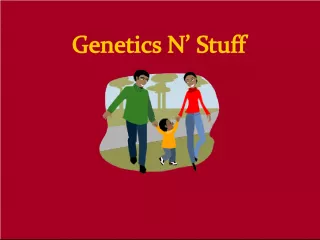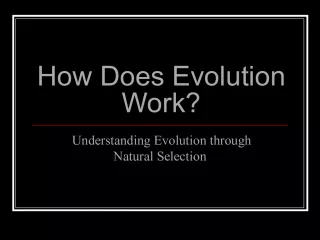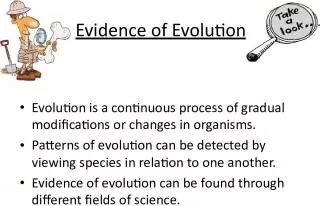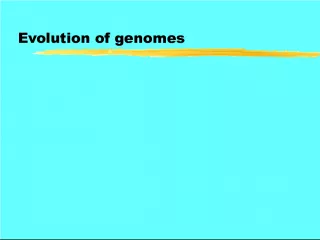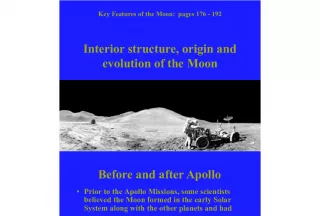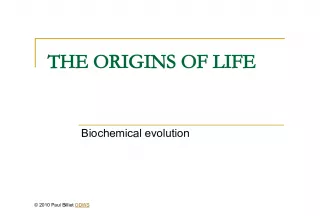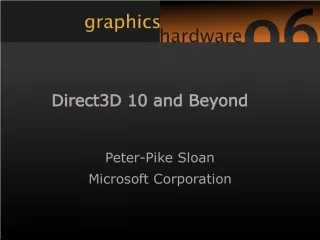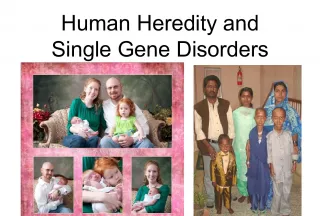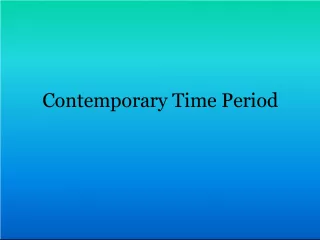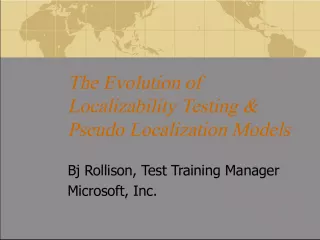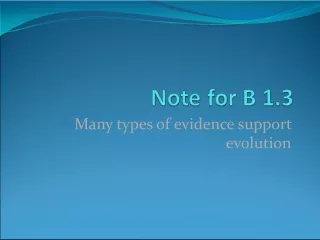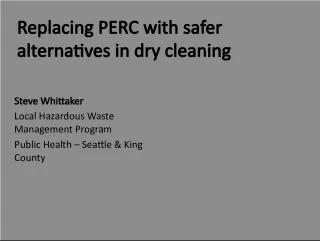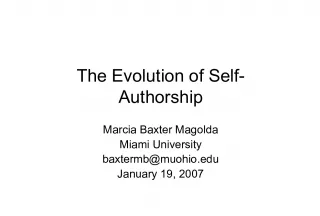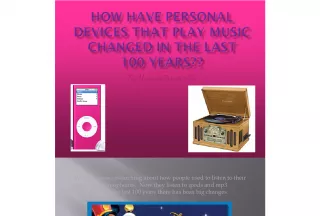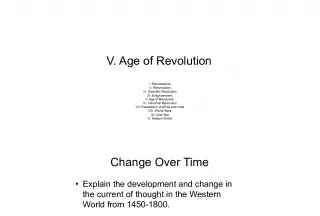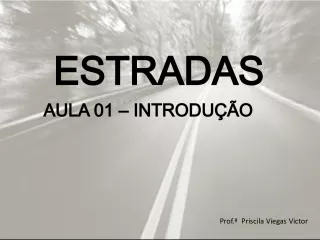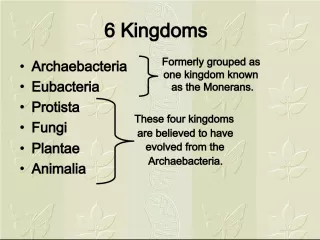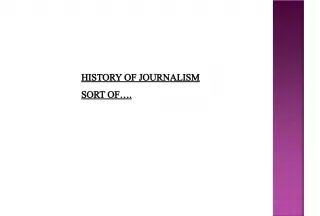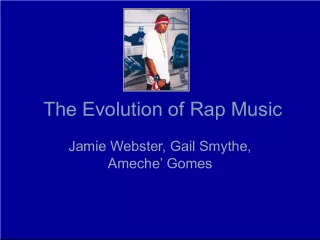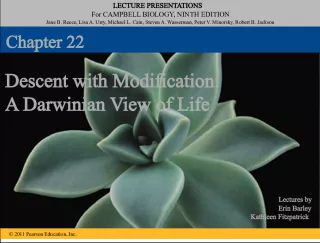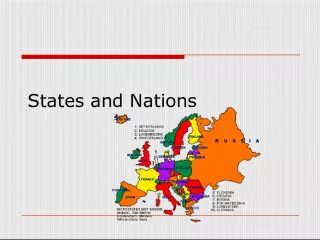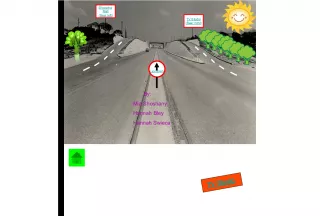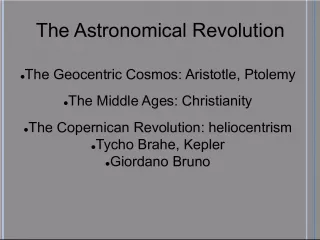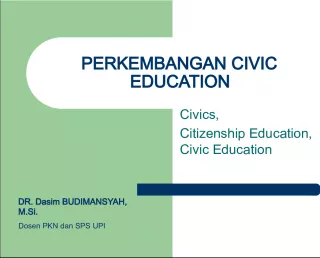Heredity and Evolution


In this lesson, we will explore the role of DNA in heredity and compare mitosis and meiosis. We will also take a look at how populations change over time and discuss the theory of
- Uploaded on | 0 Views
-
 rosajohansen
rosajohansen
About Heredity and Evolution
PowerPoint presentation about 'Heredity and Evolution'. This presentation describes the topic on In this lesson, we will explore the role of DNA in heredity and compare mitosis and meiosis. We will also take a look at how populations change over time and discuss the theory of. The key topics included in this slideshow are . Download this presentation absolutely free.
Presentation Transcript
Slide1Ch. 22 Heredity and EvolutionObjectives: - To describe the role of DNA in Heredity - To compare mitosis and meiosis - To recognize how populations change over time - To explain the theory of natural selection - To give examples of evidence that supports evolution
Slide2Questions you should be able toanswer by the end of the lesson: • What is heredity? • What are chromosomes? • What is a gene? • Describe mitosis. • Describe meiosis.
Slide3Lesson 1- Heredity• Heredity - passing traits from parents to children. • All organisms pass information about traits to their children, or offspring.
Slide4Lesson 1- Heredity• Some traits are controlled by a single gene (alleles).- eye color, hair color • Other traits are controlled by multiple genes (multiple alleles).- height, skin color
Slide5Heredity• Chromosome - rod-shaped bodies located in the nucleus of a cell. may contain hundreds of genes Made of proteins and a chemical called DNA. • Sections of DNA make up an organism’s genes, which determine a the traits of an organism
Slide6Heredity and Environment• Genetics - the study of heredity. • You are born with certain genes- that is your heredity . • Genes determine everything about you- skin color, height, eye color
Slide7Heredity and Environment• Environment also may affect your characteristics. – Environment includes family, food, shelter, sun, air you breathe, x-rays and other chemicals.
Slide8Heredity and Environment– X-rays and other chemicals can cause changes in genes- mutations. – Mutations can cause problems in humans and other organisms.
Slide9DNA• DNA in the chromosomes is what contains an organisms genes. • During cell division, genes on DNA are passed from parents to offspring. • All information needed to carry out life activities is in DNA.
Slide10DNA• DNA is a molecule shaped like a twisted ladder. • The rungs (steps) of the ladder are made of 4 nitrogen bases : – T- thymine – A- adenine – C- cytosine – G- guanine
Slide11DNA• T h e o r d e r o f t h e b a s e s i n t h e D N A m o l e c u l e s o f a c e l l p r o v i d e s a c o d e f o r a l l t h e i n f o r m a t i o n t h a t t h e c e l l n e e d s t o l i v e .
Slide12DNA• E a c h o r g a n i s m h a s a d i f f e r e n t o r d e r o f t h e n i t r o g e n b a s e s - t h e m o r e o f a d i f f e r e n c e b e t w e e n 2 o r g a n i s m s .
Slide13DNA• A g e n e i s a s e c t i o n o f t h e D N A . • E a c h D N A h a s t h o u s a n d s o f g e n e s . • D i f f e r e n t g e n e s h a v e d i f f e r e n t o r d e r o f b a s e s , w h i c h p r o v i d e s d i f f e r e n t i n f o r m a t i o n .
Slide14DNA• DNA can replicate, or copy itself. • A and T always pair and C and G always pair so when the split the correct base matches up in its place. • Genetic info is passed from cell to cell by normal cell division.
Slide15DNA• Mutations can happen during cell division- can only be passed on if it happen in the sex cells- sperm or eggs
Slide16Mitosis and Cell Division• O n e c e l l e d o r g a n i s m s - a m o e b a s - r e p r o d u c e b y s p l i t t i n g i n h a l f . • B e f o r e s p l i t t i n g t h e y m a k e a n e x a c t c o p y o f i t s e l f , t h e n t h e n u c l e a r m e m b r a n e d i s s o l v e s , t h e 2 s e t s o f c h r o m o s o m e s s e p a r a t e a n d a n u c l e u s f o r m a r o u n d e a c h s e t .
Slide17Mitosis and Cell Division• Division of nucleus into 2 new nuclei is called mitosis. • After mitosis, the entire cell divides. • Each set of chromosomes is identical to the original.
Slide18Mitosis and Cell Division• Mitosis is used for body cells to allow the body to grow and repair itself. • Mitosis= 2 new cells with the exact same information in each
Slide19Sexual Reproduction• Most many-celled organisms reproduce sexually. • In sexual reproduction, 2 cells called gametes join to form one complete cell. • Male gamete- sperm • Female gamete- egg
Slide20Sexual Reproduction• Each gamete only has half of the chromosomes found in the organism’s body cells. • When gametes join, they form a cell that has a complete set of chromosomes.
Slide21Sexual Reproduction• Humans have 46 chromosomes in the body cells. • 2 copies of 22 different chromosomes plus a pair of sex chromosomes (X and Y) • Female- X • Male- Y
Slide22Sexual Reproduction• Egg has 23 chromosomes and sperm has 23 chromosomes= 46 total when joined. • When sperm and egg join= zygote • 46 human chromosomes contain 2 copies of each gene
Slide23Sexual Reproduction• The mix of chromosomes from both parents during sexual reproduction produces an offspring that is different from either parent.
Slide24Sexual Reproduction• It also explains the difference between offspring from the same parents. • Humans and other organisms that reproduce sexually have diversity.
Slide25Sexual Reproduction• Diversity - range if differences found among members of a population.
Slide26Sexual Reproduction• If the environment changes suddenly, the diversity can help it continue to survive. • Adaptation - a change or difference that makes an organism better able to survive in the environment.
Slide27Meiosis• Gametes are formed by meiosis. • Meiosis starts like mitosis: – First make a copy of the chromosomes in a parent cells and divide – but then they divide again.- So one cell becomes 4 new sex cells. – Each sex cell contains half the number of chromosomes of the parent cell.
Slide28Objective Recap:– What is heredity? • The passing of traits from parents to offspring. – What are chromosomes? • Rod shaped structure that contain DNA and are found in the nucleus of a cell. – What is a gene? • A section of DNA that carries a trait. – Describe mitosis. • Chromosomes grow and divide to make two new cells exactly like the original. – Describe meiosis. • Chromosomes grow and divide to make two new cells exactly like the original. • Then chromosomes divide again making 4 new gametes from the original one
Slide29Lesson 2- Change over Time• Objectives: – Define evolution. – Relate genes and mutations to the process of evolution. – Define the term scientific theory. – State the 2 theories that comes from Darwin’s work. – Give 2 types of evidence that support the theory of evolution.
Slide30Questions you should be able toanswer by the end of the lesson: • What is evolution? • Do individual organisms evolve? Explain your answer. • In organisms that reproduce sexually, through what type of cells are mutations passed to offspring? • Explain the process of natural selection. • Give two types of evidence other than fossils that support the theory of evolution.
Slide31Changes Over Time• T h e r e a r e m a n y d i f f e r e n t s p e c i e s a l i v e t o d a y t h a t a r e v e r y d i f f e r e n t f r o m w h a t l i v e d i n t h e p a s t . – M o d e r n r e p t i l e s a r e m u c h s m a l l e r t h a n d i n o s a u r s a n d o t h e r a n c i e n t r e p t i l e s . – M o d e r n r e p t i l e s a l s o e a t d i f f e r e n t f o o d . • T h e d i v e r s i t y o f o r g a n i s m s t o d a y a n d i n t h e p a s t i s f r o m e v o l u t i o n - c h a n g e s o v e r t i m e .
Slide32Organisms, Populations, and Change• As an organism grows and develops it changes- is that evolution? • Individual organisms do NOT evolve.
Slide33Organisms, Populations, and Change• Evolution is the changes that occur in a population of organisms over time. • A population of organisms exist much longer than any individual species. • Evolution takes place over many generations.
Slide34Changes in Genes• E v o l u t i o n a r y c h a n g e s o c c u r i n a p o p u l a t i o n ’ s g e n e p o o l . • C h a n g e s o c c u r f r o m m u t a t i o n s : r a d i a t i o n , c h e m i c a l s , o r i n c o r r e c t l y c o p i e d g e n e s d u r i n g D N A r e p l i c a t i o n .
Slide35Changes in Genes• Mutations can occur in 2 different kinds of cells: – body cells (cause cancer and other changes in the organism- will NOT passes on to offspring, so do not cause evolutionary changes) – sex cells- gametes (do not affect the organism itself, but will get passed to the offspring- the mutations can affect the traits of the offspring and of future generations.
Slide36Effects of Mutations Over Time• Most mutations cause harmful changes in traits. • Lethal mutation - results in organism’s death. – Usually do not live long enough to reproduce- so not passed on to offspring.
Slide37Effects of Mutations Over Time• Sometimes a mutation can improve an organism’s chance for survival- more likely to reproduce- favorable mutation then passed on to offspring. • As mutation get passed on to future generations it becomes more and more common within the population. • Over time, all of the members of the population may have the mutation.
Slide38Effects of Mutations Over Time• Evolution usually occurs slowly because mutations are rare. • If environment changes, members of the population that have certain traits may be more likely to survive.
Slide39Effects of Mutations Over Time• If environment turns cold and snowy, the rabbit with white fur will help it hide from predators so will be more likely to reproduce and become more in the population. • Traits that help animals survive in the environment become more common within the population- over time population evolves.
Slide40Scientific Theory• S c i e n t i f i c t h e o r y i s m o r e t h a n a h u n c h - a g e n e r a l l y a c c e p t e d a n d w e l l - t e s t e d s c i e n t i f i c e x p l a n a t i o n . • M a n y d i f f e r e n t k i n d s o f e v i d e n c e s u p p o r t a s c i e n t i f i c t h e o r y a n d n o e v i d e n c e c a n c o n t r a d i c t i t ( o r d i s a g r e e ) . • A s s c i e n t i s t s f i n d n e w e v i d e n c e , t h e y c o m p a r e t h e e v i d e n c e t o t h e t h e o r y . • I f e v i d e n c e c o n t r a d i c t s t h e t h e o r y , t h e t h e o r y i s c h a n g e d .
Slide41The Theory of Evolution• 1831-1836 Charles Darwin traveled the world studying fossils from rock formations from very old rocks, and compared them with fossils from younger rocks. • Darwin found similar organisms in different rock formations and noticed that the similar organisms had undergone change.
Slide42The Theory of Evolution• Darwin spent a lot of time on the Galapagos Islands
Slide43The Theory of Evolution• The fossil evidence showed Darwin that species change over time. • Based on what Darwin noticed, he came up with ideas of how this happened: • First he made a hypothesis- a testable explanation of a question or problem.
Slide44The Theory of Evolution• T o d a y , D a r w i n ’ s i d e a s a b o u t e v o l u t i o n a r e s t a t e d a s 2 t h e o r i e s . • 1 ) D e s c e n t w i t h M o d i f i c a t i o n - a l l o r g a n i s m s h a v e d e s c e n d e d f r o m o n e o r a f e w o r i g i n a l l i f e - f o r m s . - E v o l u t i o n o c c u r s i n n a t u r e . • 2 ) N a t u r a l S e l e c t i o n - o c c u r s i n a l l p o p u l a t i o n s o f o r g a n i s m s - a d a p t i v e a d v a n t a g e - h a v e a g r e a t e r c h a n c e o f s u r v i v a l – E x : s n a k e w i t h a s p e c i a l i z e d u p p e r t o o t h - h e l p s t h e m g e t o u t o f t h e i r s h e l l e a s i e r = m o r e l i k e l y t o s u r v i v e a n d r e p r o d u c e – T h e e n v i r o n m e n t s e l e c t s i n d i v i d u a l s i n a p o p u l a t i o n t h a t h a v e a n a d a p t i v e a d v a n t a g e . O n e s t h a t d o n o t h a v e t h e a d a p t i v e a d v a n t a g e d o n o t l i v e t o r e p r o d u c e , s o t h e i r t r a i t s a r e l o s t f r o m t h e p o p u l a t i o n
Slide45The Theory of Evolution- NaturalSelection 1) O r g a n i s m s t e n d t o p r o d u c e m o r e o f f s p r i n g t h a n c a n s u r v i v e ( f i s h l a y t h o u s a n d s o f e g g s , b u t o n l y a f e w l i v e t o b e a d u l t f i s h ) 2) I n d i v i d u a l s i n a p o p u l a t i o n h a v e s l i g h t v a r i a t i o n s ( f i s h i n a p o p u l a t i o n m a y d i f f e r s l i g h t l y i n c o l o r , l e n g t h , f i n s i z e , o r s p e e d ) 3) I n d i v i d u a l s s t r u g g l e t o s u r v i v e . I n d i v i d u a l s t h a t h a v e v a r i a t i o n s b e s t s u i t e d t o t h e e n v i r o n m e n t a r e m o r e l i k e l y t o s u r v i v e . 4) S u r v i v o r s p a s s o n t h e i r g e n e s t o t h e i r o f f s p r i n g . G r a d u a l l y , t h e p o p u l a t i o n c h a n g e s .
Slide46The Theory of Evolution• Behaviors also evolve through natural selection • Behavior- interaction of heredity and experience- the way an organism acts • 2 main types of behavior: innate and learned
Slide47The Theory of Evolution• Innate - present at birth- inherited (chow) • Learned - not present at birth- result of experience- can change over lifetime of an organism. • Birdsongs are both- born with ability to sing- raised along will sing differently than if with a group of same species. (Carol, parrots) • Songs are behaviors that help males and females of same species identify each other so they can mate.
Slide48Evidence of Evolution• One type of evidence that supports evolution is fossil records .
Slide49Evidence of Evolution• Embryos of some kinds of species go through similar stages of development. – Human embryo has tail and gill pouches, like a fish- indicates that all vertebrates descended from a common ancestor
Slide50Evidence of Evolution• Vestigial structures- a body part that appears to be useless to an organism (snakes and whales have remnants of leg bones and pelvic bones from when they walked on the land but do not help them move) certain organisms are related to one another
Slide51Evidence of Evolution• The way living things are connected- homologous structures- body parts that are similar in related organisms – Vertebrates probably share a common ancestor that had front limbs
Slide52Punctuated Equilibria• 1972, evolutionary scientists Stephen Jay Gould and Niles Eldredge proposed another explanation, which they called "punctuated equilibrium." That is, species are generally stable, changing little for millions of years. This leisurely pace is "punctuated" by a rapid burst of change that results in a new species and that leaves few fossils behind. • Rare, rapid changes in a population http://www.pbs.org/wgbh/evolution/library/03/5/l_03 5_01.html
Slide53Punctuated Equilibria• If evolution is gradual, there should be a fossilized record of small, incremental changes on the way to a new species. But in many cases, scientists have been unable to find most of these intermediate forms. Darwin himself was shaken by their absence. His conclusion was that the fossil record was lacked these transitional stages, because it was so incomplete. • According to this idea, the changes leading to a new species don't usually occur in the mainstream population of an organism, where changes wouldn't endure because of so much interbreeding among like creatures. Rather, speciation is more likely at the edge of a population, where a small group can easily become separated geographically from the main body and undergo changes that can create a survival advantage and thus produce a new, non- interbreeding species. http://www.pbs.org/wgbh/evolution/library/03/5/l_035_01.html
Slide54Essay• Which theory do you believe in? Natural Selection or Punctuated Equilibria? • Why do you believe this? • Is there any way to really know?
Slide55Objective Recap:• What is evolution? • Do individual organisms evolve? Explain your answer. • In organisms that reproduce sexually, through what type of cells are mutations passed to offspring? • Explain the process of natural selection. • Give two types of evidence other than fossils that support the theory of evolution.
